Feature: Alissa St Laurent, queen of the mountains
She's a 31-year-old accountant and she grew up in the middle of nowhere. Alissa St Laurent is queen of the mountains.
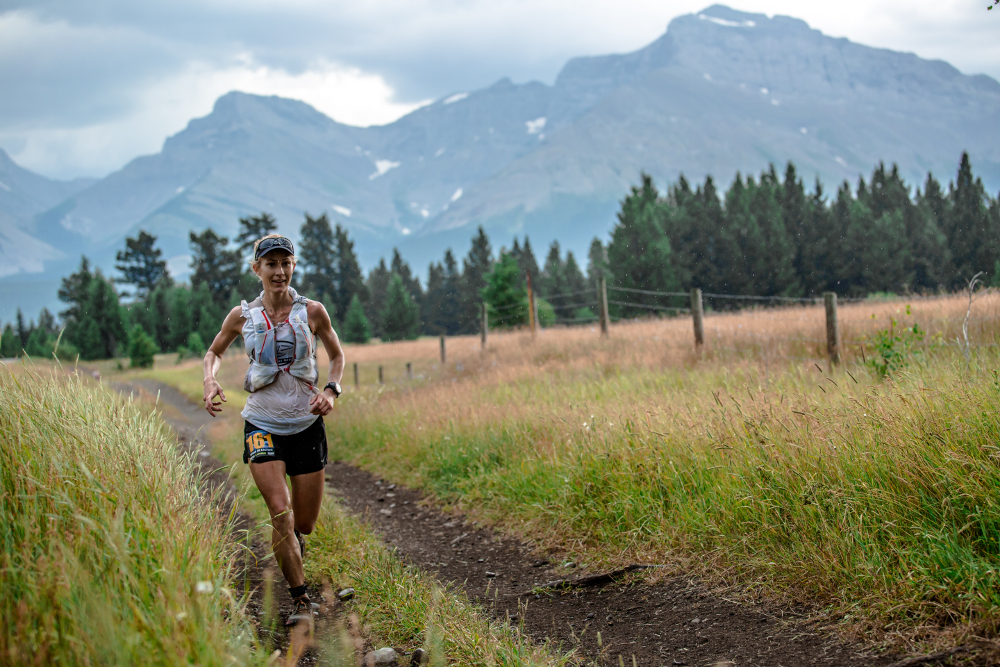
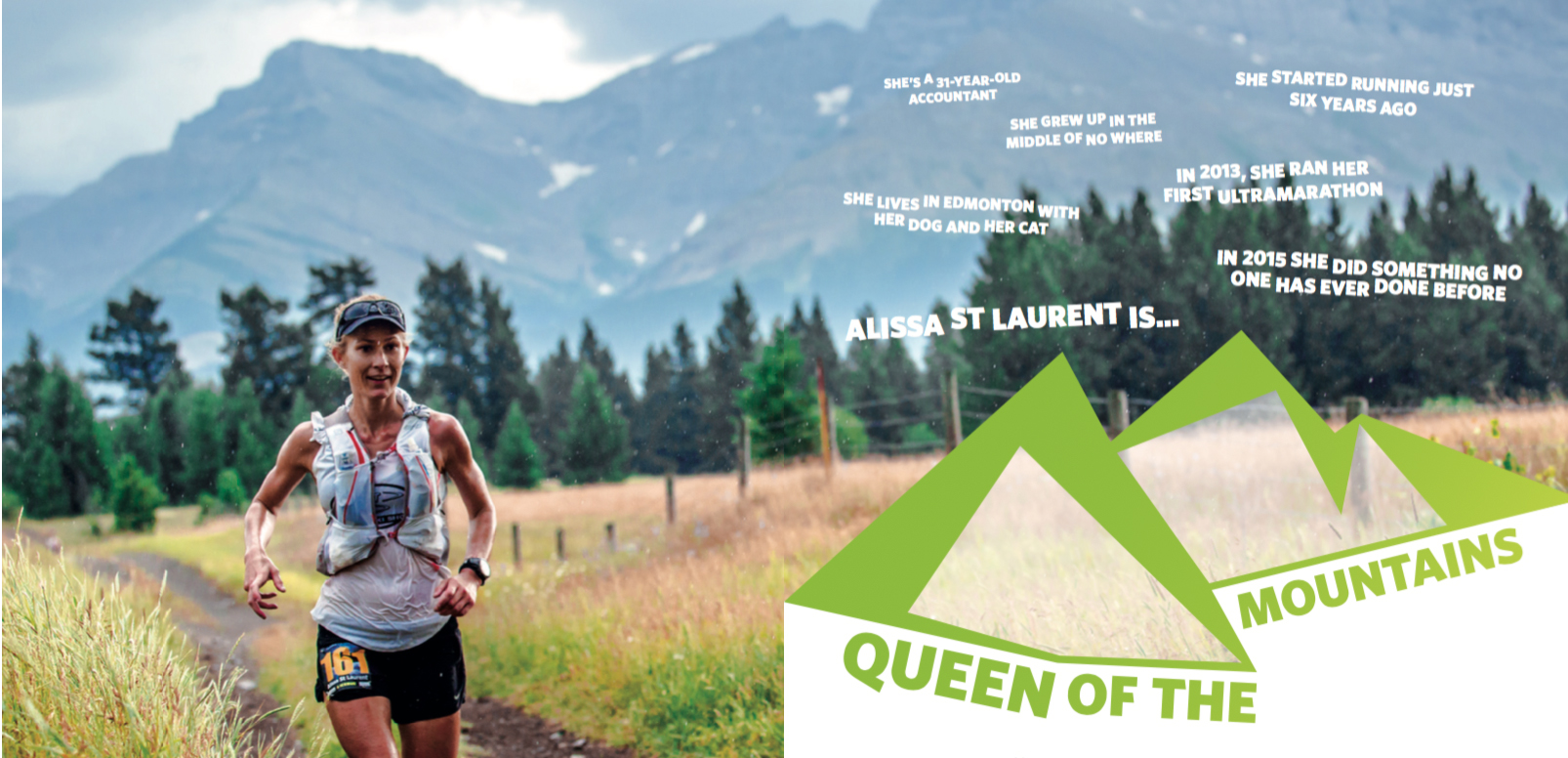 By Jay Smith
By Jay Smith
Ryne Melcher didn’t want to curse things, but by leg two of the five-leg, 125-kilometre 2015 Canadian Death Race, he suspected that Alissa St Laurent, the come-from-nowhere ultrarunner that he had been coaching for mere months – and who had only started running at all six years earlier – was going to be the first woman ever to win the ultramarathon.
RELATED: Top 10 Canadian national parks to run in.
One other woman had come close – in 2011, Scottish phenom Ellie Greenwood crossed the finish line only 45 minutes behind the first-place male. In fact, the splits that Melcher was giving St Laurent were based on Greenwood’s performance. He had crewed for Greenwood in the past, and saw a remarkable similarity between the two runners. Neither had much of a running background, but had started running ultras in their 20s. Immediately both met considerable success. After picking up the sport in 2008, Greenwood won the 2010 and 2014 100k World Championships. And St Laurent, a 31-year-old accountant for a consortium of local businesses in Edmonton, cut her teeth with ultras on a leg of the 2012 Death Race. She returned the next year to win first female and had inadvertently turned one of the toughest courses in the world into her proving ground as an elite ultramarathoner.
Melcher could tell his runner was in first when he recognized St Laurent’s blonde hair piled on top of her head. She zipped into the transition between leg two and leg three and Melcher gave her some splits for the third leg as she took in a gel. St Laurent was eager to get back to running, and spent just three minutes refuelling and talking strategy with her coach.“The two guys right behind her stayed for six or seven minutes,” remembers Melcher. “If you’re spending that much time in transition, I thought, ‘you’re not going to see Alissa again.’”
Three weeks earlier, St Laurent had run Sinister 7, a 100-mile race through the Rocky Mountains that act as the natural divide between Alberta and British Columbia. There, she won first female, finishing just 15 minutes behind Dave Proctor, who won the race overall. She beat the women’s course record by two hours and 34 minutes – and beat the record for the old, 148-kilometre course to boot. In her race report, St Laurent confessed to feeling anxiety before races, so much anxiety that it spawned its own anxiety – “anxiety about being anxious.” From her breakfast of muesli, almond milk, a banana, a coke and some coffee, to the finish line, however, she makes running 161 kilometres sound easy. She just floats through the race, using words like “effortless,” “fun” and “relaxed” to describe running up and down the eponymous seven “sinister” mountain passes.
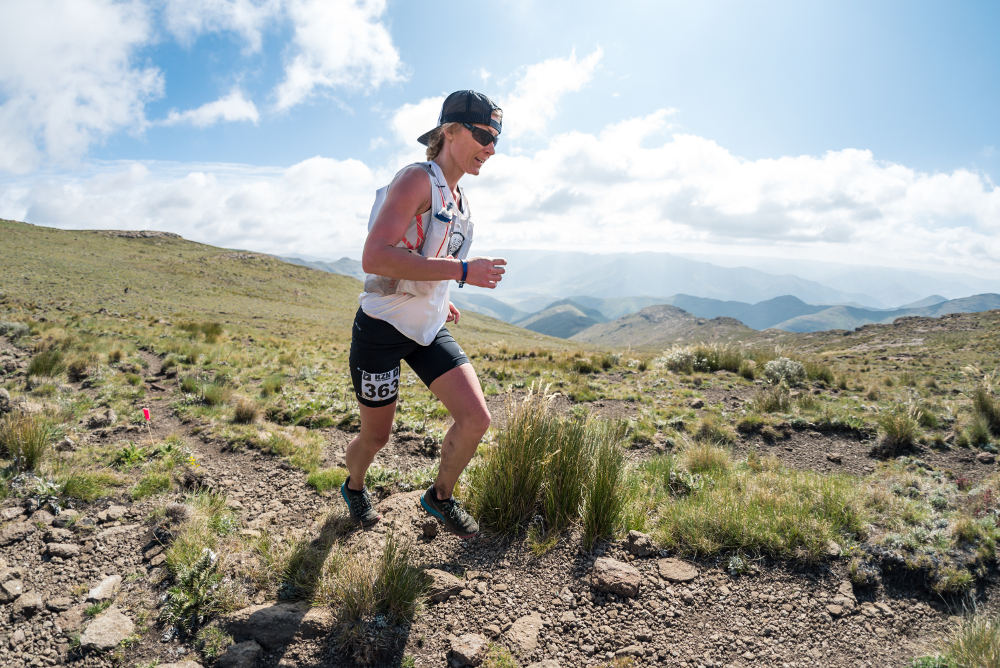
St Laurent confesses that she signed up for the Death Race, the brutal day-long scramble up and down the Rockies near Grande Cache, Alta., only three weeks before the race. There was not a lot of premeditation involved. Melcher decided to do something aggressive and he built an “A” racing plan around reproducing Ellie Greenwood’s success several years earlier. And even though she had run a 100-miler so recently, St Laurent went into the race with a competitive spirit. “I definitely wanted to win. I was definitely gong to push if someone was going to inspire that in me. I just wanted to go for it and go as hard as I could.”
Melcher, a former ultrarunner himself and the new manager of Canada’s ultra and trail running national teams, had his eye on St Laurent for some time before coaching her. Knowing the depth in Canada, especially among women, he had been trying to put together the most competitive team he could. For a discipline like trail running, especially ultras, that can be easier said that done. Qualifying for the national team is based exclusively on race times. Yet trail times are, quite obviously, more variant on terrain than road or track races. So, as Melcher points out, someone like Vancouver’s Anne-Marie Madden, who placed fourth at her debut ultra, the 2014 North Face 50-miler, and second the subsequent year, could still only be ranked 14th nationally because of her slower finishing times.
Melcher first saw St Laurent race at the 2015 World Championships in Annecy, France – where she ran for Canada but finished a disappointing 56th out of 85 in the women’s field. St Laurent was concerned that Melcher would lose faith in her, but when she called him up a few weeks later to ask if he would be her crew support for some races over the summer, he was game. Melcher knew that the race at Annecy just wasn’t her day. “That’s kind of how ultras go,” he says. “Some days everything clicks, some days nothing clicks.” He knew that the day wasn’t representative of her abilities.
The land bordering southwestern Alberta, Montana and British Columbia is an idyllic contrast of prairies and mountain passes. Golden wheat fields sway hypnotically in the breeze, and idly grazing Hereford cattle have as a backdrop the Rocky Mountains, regal from a far. Thanks to the unique topography, which generates strong and constant winds, in the early 2000s the region became a testing ground for wind farm projects. Many of the fields are lined with these white turbine towers, their blades always spinning.
This is where Alissa St Laurent grew up. Her father was a trail guide, giving horseback and hunting tours of the Rockies. St Laurent and her siblings, three brothers and two sisters, spent their childhoods outdoors. “We lived in the middle of nowhere, down a little dirt road, with no other people around,” she recalls. The St Laurent children may not have had formal sports training, but they hiked and rode and explored. Even today, St Laurent says this love of being outdoors is what motivates her to run.
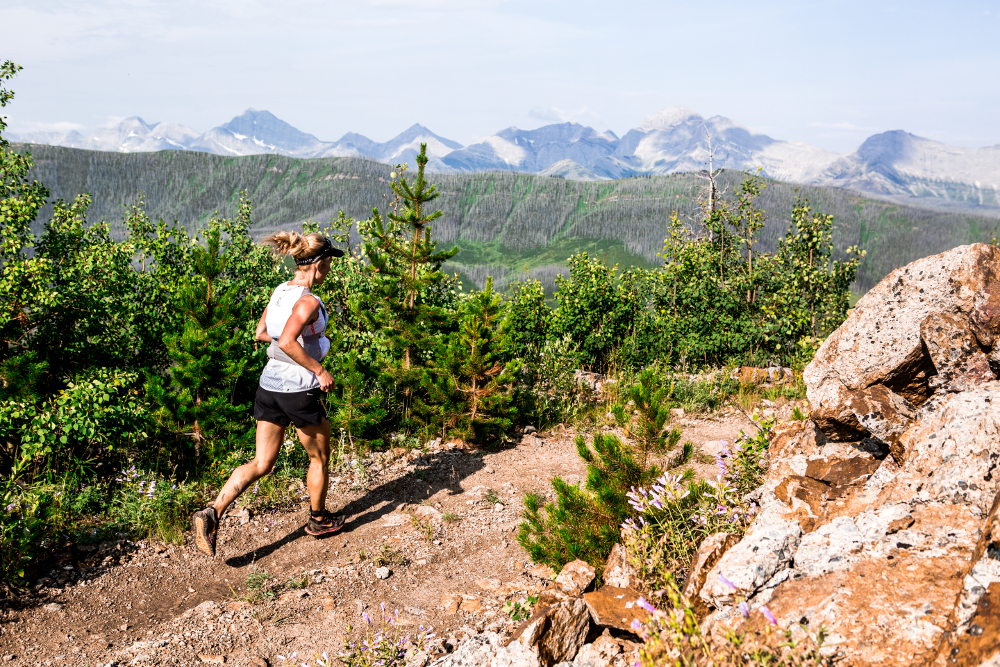
St Laurent eventually moved seven hours north to Edmonton. She settled down with her boyfriend and their dog and cat, in a little house in the Goldbar neighbourhood that St Laurent confesses they’re “constantly trying to fix up without spending too much money.” In her mid-20s, St Laurent decided to get fit. “I started off kind of running in little boot camps to stay in shape,” she says.“It turned into a social thing, I’d go hang out with some girlfriends.” The bootcamps evolved into half-marathons and then a couple of marathons. “I started to get faster,” remembers St Laurent. “Nothing to write home about, nothing impressive. Then I switched to the trails.” In 2012, she ran a leg of the Death Race. Although the race has never actually killed anyone, its notoriously challenging course careens through the Rockies, including 17,000 feet of elevation change, fording a large river and cresting three mountain summits. “I watched all these soloists,” she says of her first experience at an ultra, seeing runners pushing well beyond the 42.2k distance of a marathon. “I had never heard of anyone running so far; these distances were absolutely crazy.” She became preoccupied with picking them out every time a soloist came through. “I found myself thinking, ‘Oh, I’m coming back next year and I want to be one of them.’”
In 2013, St Laurent focused. She tried out a 50k race and upped her mileage from her usual 70 kilometres a week. She was running with a group out of Fast Trax, a gear shop in town, led by shop owner, runner and Nordic skier Jack Cook. “I really had no idea what I was doing, and no expectations,” she now realizes. “I made the transition in training pretty slowly,” she recalls. “I didn’t do a ton of mileage that year. I hit some 100-kilometre weeks.” Surprising herself and everyone she trained with, St Laurent won the women’s division of the 2013 Death Race in just over 16 hours. Her nearest female competitor was over an hour back, but the first place overall was three-and-a-half hours ahead.
VIDEO: North Vancouver trail runner Ellie Greenwood’s latest adventure in Barcelona.
Cook remembers when St Laurent joined the shop’s running group. And while it’s easy to think that her success was the magical uncovering of natural talent, Cook instead praises St Laurent’s work ethic. Her success is available to any athlete, he says, if less dramatically. “It’s not necessarily that she’s been doing anything special, but she’s been able to keep that drive, day in, day out.” He points out that St Laurent never missed a club workout. “When you can string that many workouts together, and be that consistent, you can see great success, regardless of whether you’re winning the Death Race, or training for a 4:30 marathon,”
He does note, however, that he foresaw her success as an ultrarunner when he saw her running down hills. Training in a city like Edmonton is not easy for competitive ultramarathoners simply because there aren’t many hills. There’s the up and down out of the river valley, but nothing resembles the sort of gruelling, unending climbs (and, perhaps more importantly, descents) found in the mountains. A combination of natural talent, work ethic, and strength training meant that St Laurent handled the descents especially well. “When you’re an ultrarunner coming from Edmonton, the downhills are punishing,” says Cook “The thing I noticed was how hard she could run the downhills. It’s a key indicator that she was absorbing the training well.”
That training also consisted of driving down to the mountains on the weekends and running the trails all day. When Melcher started working with her, he required her to do ‘shorter’ (by ultra standards, at least) speed work, like a 25-kilometre time trial in an hour and 45 minutes. “She’d come back and say, ‘I’m whipped – but I’d be whipped after going six hours in the mountains, doing 10,000 feet of elevation,’” Melcher recalls, revealing her hunger to do whatever it takes to be great.
Back in Grande Cache in 2015, Melcher knew that St Laurent’s first place position coming out of leg three and into leg four was solidifying. An altitude chart of leg four is a precipitous red line jagging downwards. “The more gnarly it gets, the better she is,” says Melcher. By the time he had the numbers from the Ambler loop, which is 87 kilometres in to the race, he told her: “‘You could almost jog this in and no one is going to catch you.” “Of course,” he qualifies, “you don’t want to get excited too early, you don’t want to get caught, because it’s not over ’til you cross the finish line.”
After just 13 hours and 51 minutes, St Laurent broke the tape at the Death Race. Second place finisher Graham Glennie crossed one hour and 28 minutes later. The victory was immediately picked up by the national media – a woman had bested all the men at one of the hardest off-road running races in the country.
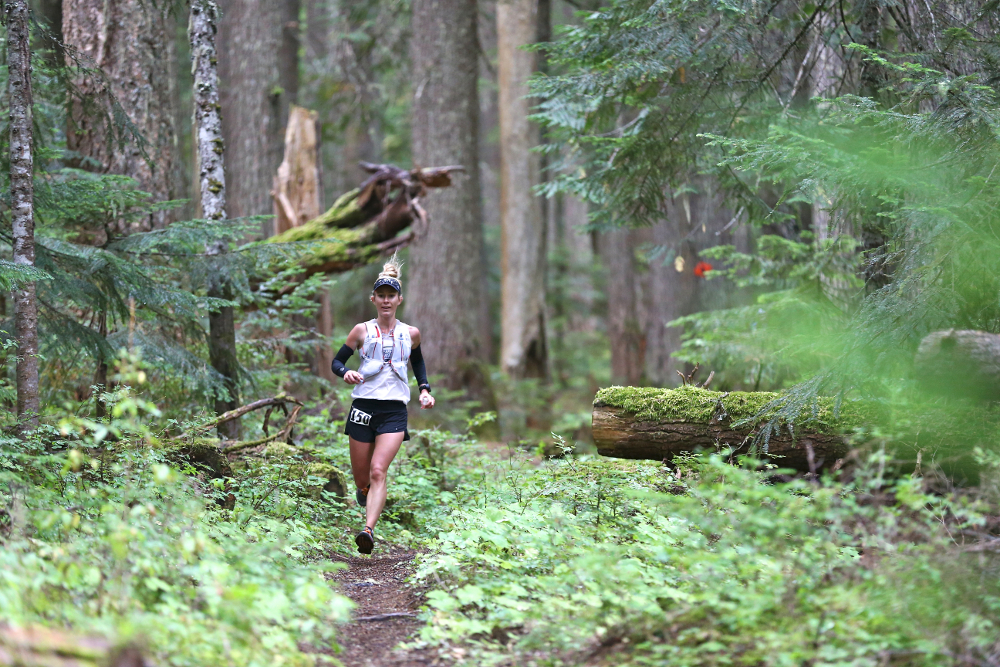
St Laurent likes to downplay the gendered aspect of her victory. “I know it has kind of made me seem like a badass, but honestly it’s not a big deal to me,” she says. “Don’t get me wrong, I believe women can kick butt in any sport and in ultrarunning in particular, I’m proud to have proved that. Women are so strong. Ultrarunning requires so many different applications of strength and I think that plays in our favour.”
As for the future, St Laurent has her eyes on some early-season ultras, including the legendary 100-mile Western States Endurance Run in late June (Melcher hopes to see her on the podium), and then another mountain classic, the Ultra Trail du Mont Blanc (utmb). It’s not too far from Annecy, where St Laurent had her disappointing performance at the world championships last year, but she has already addressed those demons.
“I finished the race feeling pretty defeated,” she admits. “But from there I went off on my own to Chamonix (where utmb is held) and on to Zermatt and just spent a few weeks running every day in the Alps, doing whatever I felt like. It completely recharged me. I felt so at home in the area and really connected with why I love the trails and these big distances.”
First, though, she’s got another challenge: the world record for 100 kilometres run on a treadmill at a charity event that her pal and competitor Dave Proctor is organizing. While he’s going for the 24-hour record, St Laurent decided on what she’s calling a less ambitious goal. “I’ve never run for 24 hours, let alone on a treadmill,” she laughs when talking about her choice to stick to 100K. “I’m not ready to take that sort of damage. I’m hoping for 7.5 hours. The atmosphere will make it fun because no one wants to be on a treadmill for that long.”
Then, St Laurent will disappear back into the mountains.
Editor’s note: This feature appeared in Canadian Running‘s trail special.


